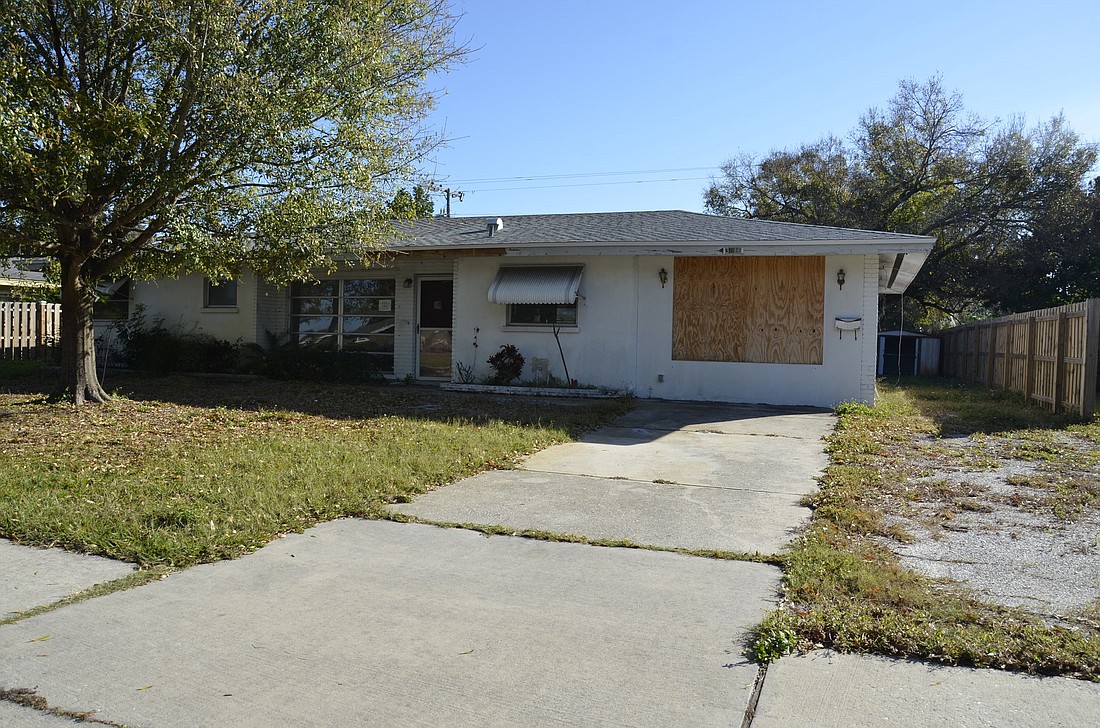- December 12, 2025
-
-
Loading

Loading

Since the recession, the Sarasota County Code Enforcement Department has received increased complaints of issues such as abandoned properties and yard overgrowth. In an average month, Sarasota County’s 11 code enforcement officers respond to 304 complaints.
However, the county’s officers don’t only deal with complaints they receive. Although call-ins and reports are the top priority, officers are supposed to keep their eyes out for other violations in their areas that have gone unreported.
“With code enforcement, there’s a fine line between compliance and over-aggressive to where you’re intrusive,” said Dennis Murphy, the county’s development services manager.
Murphy said he’d like to add one or two more officers to the staff, but that’s not likely. The division’s budget comes out of the county’s general fund, which is generated by the ad valorem property tax and from violation fees. The millage rate has remained steady for seven years, and the staff level for code enforcement has followed suit.
“People say they want more code enforcement, but do they want to pay more taxes for them?” Murphy said. “The county administration and commissioners are happy with the existing staffing levels.”
In fiscal year 2016, however, the division is going to ask to add two administrative employees, at least.
Having an extra person or two to take care of paperwork would help the officers be able to spend more time on the road and crack down on violations, instead of being bogged down in the office, Murphy said.
Charles Marchione, one of the supervisors of the Sarasota County Code Enforcement Division, has been working in code enforcement for nine years following a 30-year career as a police officer in both Philadelphia and Sarasota.
Code enforcement plays an important role not only in the overall cleanliness of the neighborhood but also in property values and general neighborhood climate. Marchione explained “broken window syndrome:” one broken home window that goes unrepaired can turn the entire neighborhood into a bad part of town as other things get neglected.
Keeping a neighborhood in compliance with code can prevent this kind of degradation and also help reduce crime.
But Marchione stresses they are looking for violations that break code — not just the rules of aesthetics.
“We don’t do ugly,” Marchione said.
Enforcement Myths versus Facts
Myth: Weeds in the yard is considered overgrowth.
Fact: A property can only be deemed overgrown if plants are more than 12 inches tall.
Myth: A code enforcement officer can go into people’s back yards and look over fences.
Fact: Officers can only go as far as the front door and cannot access property with a no trespassing sign posted. The officer has to be able to see the violation naturally
without going to extremes.
Myth: Stationary cars are a code violation.
Fact: These cars are only a violation if their tags are out of date or inoperable.
By the numbers
390,429 - population of unincorporated Sarasota County in 2014
304 - average code complaints a month Sarasota County receives
11 - code enforcement officers for the county
2 - supervisors
Morning Routine
A two-hour ride revealed a variety of cases — not all of which qualified as a violation.
9:10 a.m. — The Sarasota Observer meets up with Charles Marchione, one of the supervisors of the Sarasota County Code Enforcement Division.
9:12 a.m. — Marchione gives us a detailed folder of information on the county code and its enforcement, along with several cases we’ll be looking into during the drive.
9:14 a.m. — We take a photo of Marchione as he checks out some of the paperwork for today’s work. He said the officers’ names, photos and contact information is not listed on the county’s website because of the retaliatory reaction of some offenders.
9:28 a.m. — Marchione parks his car a few blocks from the property, checks the address again and looks over the complaint. The report said the complaint was of vagrants and debris on the vacant lot.
9:30 a.m. — Marchione pulls up to the vacant lot, which looks overgrown. There are no signs of vagrants on the lot, although there is a boat parked there, which is a code violation, he said. The overgrowth could be acceptable. If a property is grown out for more than five years, it’s deemed to be in its natural state.
9:36 a.m. — Marchione drives a few more blocks and checks on the next property, an overgrowth report. When we arrive at the home, which is abandoned, the only tall plant is one small weed near the curb. Growth has to be more than 12 inches to qualify.
9:56 a.m. — The next home is nearby; the complaint is unprepared trash. Marchione validates the complaint — there is a pile of sticks and brush that are not bundled properly. We then head south to McIntosh Road, where someone filed a complaint that a vacant home was unsafe and unfit.
10:14 a.m. — As we walk around the house, Marchione says the property is not that bad; he doesn’t see any violations. Through the window, we see the remnants of the previous tenants — empty chemical bottles, boxes and
an office chair.
10:23 a.m. — We hop back in the car for another case. Someone complained of a rooster, a falling fence and stationary cars in the yard of a property on South Lockwood Ridge Road.
10:32 a.m. — The residents of the property are at home, but they go inside the house as we pull up. The fence is intact in our line of vision. There are cars in the yard, but Marchione said that is only a violation if the tags on the vehicles are outdated.